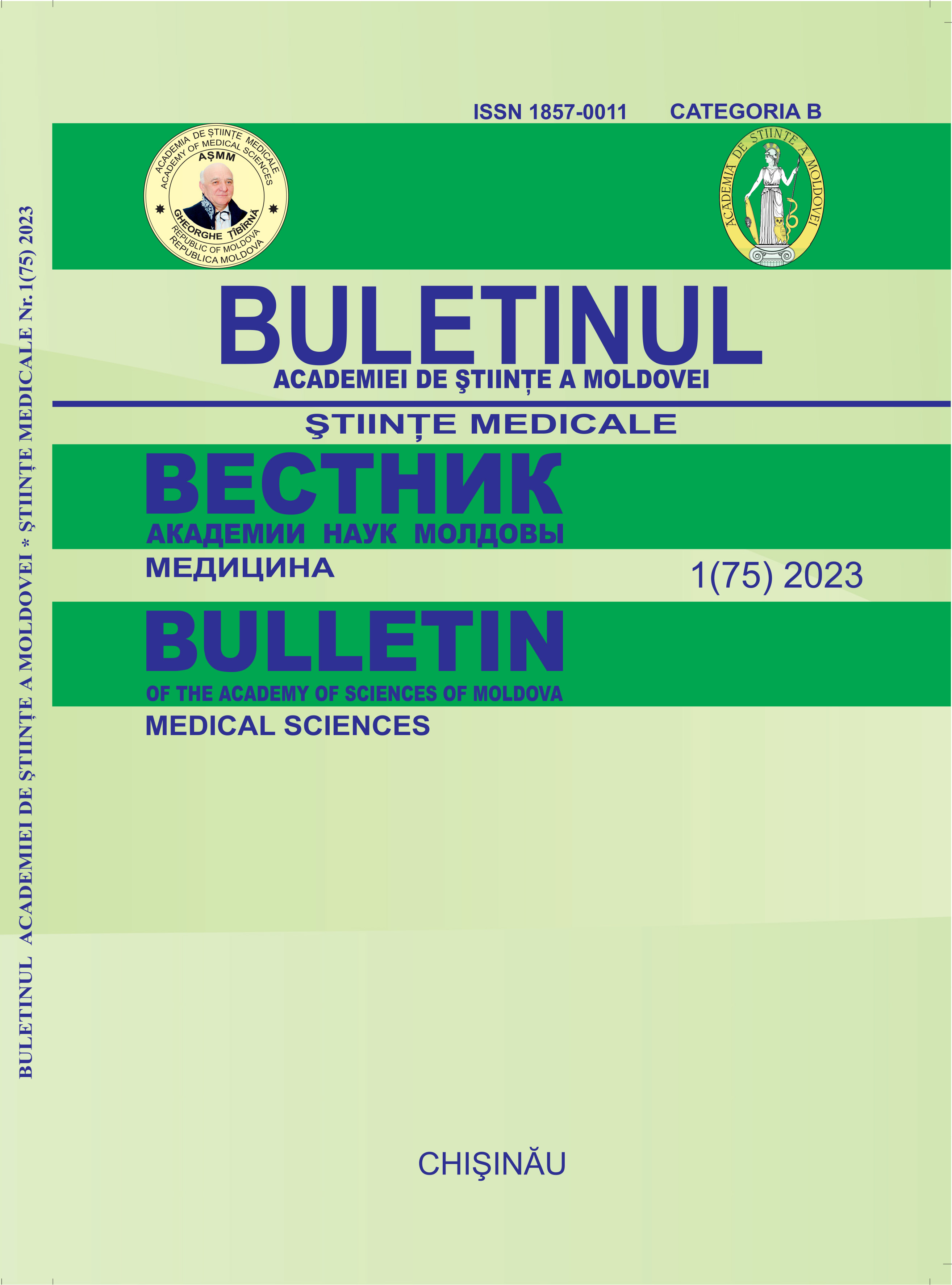Clinical and hemodynamic particularities of patients with acute ST-segment elevation myocardial infarction subjected to late interventional treatment
DOI:
https://doi.org/10.52692/1857-0011.2023.1-75.04Keywords:
ST-segment elevation myocardial infarction, early and late myocardial intervențional reperfusion, major cardiovascular eventsAbstract
To save the viability of the ischemic myocardium in a patient with ST-segment elevation myocardial infarction and improve the survival, coronary blood flow must be restored as soon as possible, preferably within the first 12 hours after the onset of pain. The current dilemma of interventional cardiologists is the decision about the possibility of performing interventional myocardial reperfusion in the patients with delayed presentation (more than 12 hours from the onset) and establishing the predictive factors of the procedures performed in this category of patients. In ths study 63 patients with STEMI were included, divided into 2 groups: the first one included 33 patients presentetd at the emergency department within the first 12 hours after the onset of STEMI, and the second group consited of 30 subjects with STEMI in whom the first medical contact was more than 12 hours after the onset of symptoms. The groups were compared with each other according to the well-established criteria. The primary end points were the assessment of major cardiovascular events (MACE), as well of ventricular myocardium remodeling/reverse-remodeling and predictors of interventional procedures. The improvement of left ventricular myocardial contractile function (LVEF), seems to be associated with early myocardial revascularization. Early presentation in STEMI can be considered an independent predictor of the improvement of the regional kinetics affected by AMI. The contractile function of the LV myocardium represented by the ejection fraction is considered an independent predictor of long-term and short-term mortality in patients with STEMI. The preliminary results of the research highlight the applicative value of PCI procedures also for patients with delayed presentation more than 12 hours from the onset of the disease and the first medical contact.
References
Lippi G, Sanchis-Gomar F, Cervellin G. Chest pain, dyspnea and other symptoms in patients with type 1 and 2 myocardial infarction. A literature review. Int J Cardiol 2016;215:20-2.
Mozaffarian D, Benjamin EJ, et al. Executive Summary: Heart Disease and Stroke Statistics--2016 Update: A Report From the American Heart Association. Circulation 2016;133:447-54.
Knuuti A, et al. (2019). 2019 ESC Guidelines for the diagnosis and management of chronic coronary syndromes. European Heart Journal, 41(3), 407–
Braunwald, E., & Morrow, D. A. (2013). Unstable Angina: Is It Time for a Requiem? Circulation, 127(24), 2452–2457.
Abraș M., Grib L., Gheorghiu C., Grib A., Surev A. Factorii de risc și detectările angiografice la pacienții cu sindrom coronarian acut. Buletinul Academiei de Ştiinţe a Moldovei. Ştiinţe Medicale 51 (2), 107-111
Ibanez, et al. (2017). 2017 ESC Guidelines for the management of acute myocardial infarction in patients presenting with ST-segment elevation. European Heart Journal, 39(2), 119–177.
Eagle KA, Goodman SG, Avezum A, Budaj A, Sullivan CM, Lo´ pez-Sendo´ n J; GRACE Investigators. Practice variation and missed opportunities for reperfusion in ST-segment-elevation myocardial infarction: findings from the Global Registry of Acute Coronary Events (GRACE). Lancet. 2002;359(9304):373-377.
Nepper-Christensen, et al Clinical outcome following late reperfusion with percutaneous coronary intervention in patients with ST-segment elevation myocardial infarction. European Heart Journal: Acute Cardiovascular Care, 204887261988631.
Xiu, et al. (2019). Delayed PCI 12 Hours after the Onset of Symptoms Is Associated with Improved Outcomes for Patients with ST-Segment Elevation Myocardial Infarction: A Real-World Study. Journal of Interventional Cardiology, 2019, 1–11.
Stiermaier T, Eitel I, de Waha S, et al. Myocardial salvage after primary percutaneous coronary intervention in patients with ST-elevation myocardial infarction presenting early versus late after symptom onset. Int J Cardiovasc Imaging 2017; 33:1571–157.9
Rácz, Ildikó & Fülöpet al. (2014). Wall motion changes in myocardial infarction in relation to the time elapsed from symptoms until revascularization. Anadolu Kardiyoloji Dergisi/The Anatolian Journal of Cardiology. 15. 10.5152/akd.2014.5457.
Serrao GW., et al. Predictors of Left Ventricular Ejection Fraction Improvement After Primary Stenting in ST-Segment Elevation Myocardial Infarction (from the Harmonizing Outcomes With Revascularization and Stents in Acute Myocardial Infarction Trial). Am J Cardiol. 2018 Mar 15;121(6):678-683. doi: 10.1016/j.amjcard.2017.12.004. Epub 2017 Dec 22. PMID: 29394998.
Downloads
Published
License
Copyright (c) 2023 Bulletin of the Academy of Sciences of Moldova. Medical Sciences

This work is licensed under a Creative Commons Attribution 4.0 International License.



